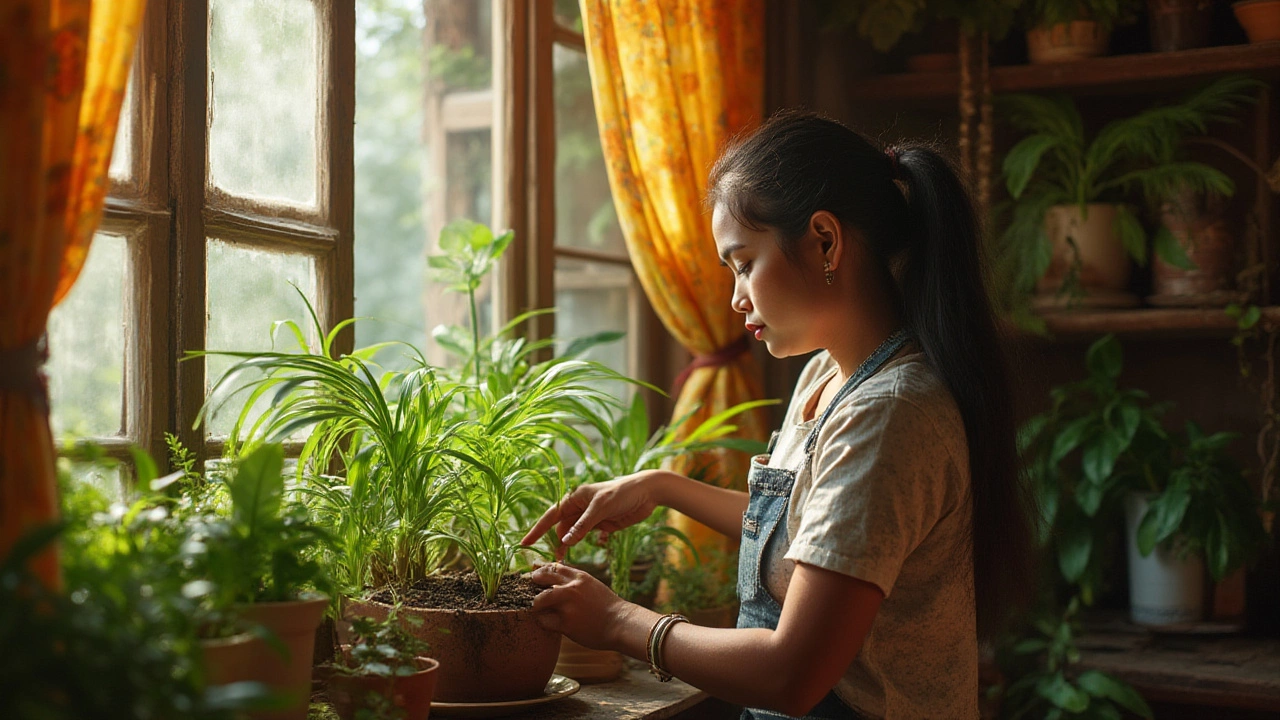Revive Dying Plants – Simple Steps to Save Your Green Friends
Got a wilted pothos or a droopy basil that looks like it’s on its last leg? You’re not alone. Most plant emergencies boil down to a few easy‑to‑miss mistakes. The good news? You can turn things around in a day or two with the right moves.
Identify the Real Problem
First thing’s first – figure out what’s actually hurting your plant. Grab a small spoon and feel the soil about an inch deep. If it’s bone‑dry, the plant is thirsty. If it’s soggy and smells musty, you’ve overwatered and likely got root rot.
Next, check the light. A plant tucked in a dark corner will stretch, lose colour, and eventually die. Move it to a spot that matches its light needs – bright indirect for most houseplants, direct sun for succulents.
Pests are sneaky. Small white specks, sticky residue, or webbing means you’ve got bugs. A quick spray of soapy water or neem oil can save the day.
Don’t forget nutrients. Yellowing leaves often signal a lack of nitrogen or iron. A balanced liquid fertilizer every two weeks can give the boost you need.
Apply the Fixes
Now that you know the culprit, here’s how to act. For under‑watered plants, give a deep soak until water drains out the bottom. Let the excess drain – never let the pot sit in a saucer full of water.
If over‑watering is the issue, gently remove the plant, shake off soggy soil, and repot in fresh, well‑draining mix. Adding perlite or coarse sand helps keep excess water away from the roots.
For light problems, rotate your plant weekly. This ensures all sides get equal exposure and prevents one side from becoming leggy.
When pests show up, treat early. Spray the leaves with a diluted dish‑soap solution (one teaspoon soap per quart of water), cover the soil to keep bugs from hiding, and repeat every few days until they disappear.
Feed your plant with a half‑strength fertilizer if the leaves look pale. Be careful not to over‑fertilize – too much can burn the roots.
Prune any dead or yellowing leaves. Cutting back stresses the plant less and directs energy to healthy growth. Use clean scissors and make cuts just above a leaf node.
A quick tip that many overlook: coffee grounds can harm certain plants like roses and tomatoes. If you’re using grounds as fertilizer, stick to plants that love them – such as azaleas or blueberries.
Finally, give your plant a breather. A week of consistent care, proper water, light, and feeding can revive most wilting greens. Keep an eye on it and adjust as needed.
Remember, plants are forgiving, but they need the right basics. Once you master watering, light, and nutrients, reviving a dying plant becomes second nature. Happy gardening!
How to Stop Houseplants From Dying: Proven Tips for Thriving Indoor Plants
Discover expert tips to stop your houseplants from dying. Learn about proper watering, choosing the right light, and avoiding common mistakes that kill indoor plants.
About
Gardening
Latest Posts


Drip Tape vs Drip Line: The Ultimate Guide for Efficient Watering
By Alden Thorne Jul 21, 2025

What Not to Grow in a Greenhouse: Avoid These Flower Flops
By Alden Thorne Mar 24, 2025

How to Loosen Heavy Garden Soil: Simple Additives for Better Texture
By Alden Thorne Jul 30, 2025

